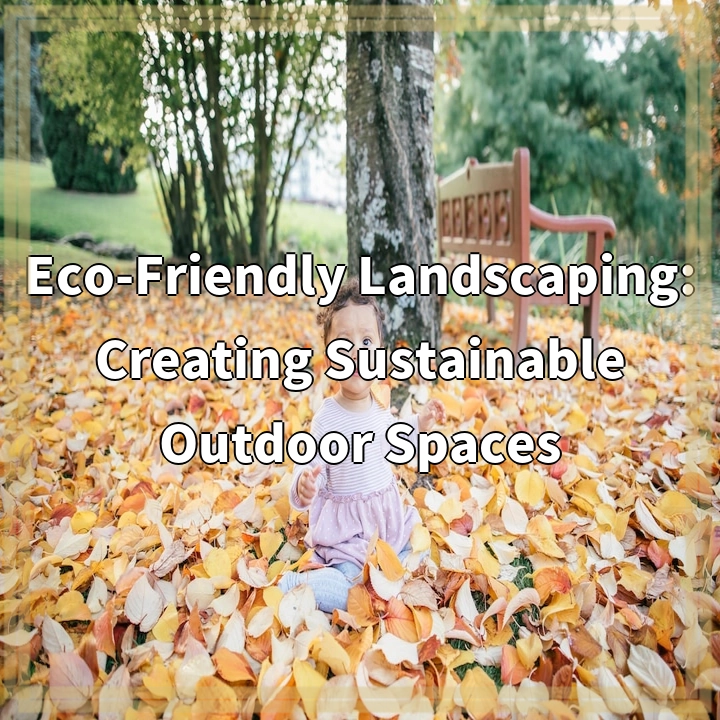
What is Eco-Friendly Landscaping?
Eco-friendly landscaping, also known as sustainable landscaping or green landscaping, is an approach to designing and maintaining outdoor spaces that minimizes negative environmental impacts while maximizing positive ecological benefits. It involves utilizing practices and materials that conserve water, reduce pollution, support wildlife, and promote overall environmental health.
Real-World Problems Associated with Eco-Friendly Landscaping
While eco-friendly landscaping offers numerous benefits, there are also real-world challenges and obstacles that can make its implementation more difficult. Understanding these issues can help us find effective solutions and work towards creating more sustainable outdoor spaces.
1. Limited Awareness and Knowledge
One of the main obstacles to implementing eco-friendly landscaping is the lack of awareness and knowledge among homeowners, landscape contractors, and even public officials. Many people may not be familiar with the principles and practices of sustainable landscaping, making it difficult for them to adopt these approaches in their own outdoor spaces.
2. Cost Considerations
Another challenge is the perception that eco-friendly landscaping is more expensive. While upfront costs may be slightly higher due to the use of certain materials or equipment, the long-term benefits, such as reduced maintenance and water bills, can outweigh the initial investment. However, the misconception of higher costs can deter individuals from embracing sustainable landscaping practices.
3. Limited Access to Resources
Access to resources such as native plants, organic fertilizers, and sustainable building materials can also hinder the adoption of eco-friendly landscaping practices. In some areas, these resources may be scarce or not readily available, making it challenging for individuals to incorporate them into their outdoor spaces.
4. Water Management
Conserving water is a vital aspect of eco-friendly landscaping. However, efficient water management can be problematic, particularly in regions prone to drought or with limited water supplies. Balancing the need for irrigation with water conservation requires careful planning and the use of innovative technologies and techniques.
5. Local Regulations and Codes
In certain areas, local regulations and codes may pose challenges to implementing eco-friendly landscaping practices. For example, restrictions on rainwater harvesting or limitations on the use of certain materials can hinder the adoption of sustainable design and maintenance approaches.
6. Overcoming Aesthetics Expectations
Eco-friendly landscaping often promotes the use of native plants and other ecological features that may differ from conventional aesthetics. Addressing the expectation for traditional, manicured lawns and ornamental plants can be a significant challenge, as some individuals may resist embracing more naturalistic and sustainable outdoor designs.
In conclusion, while eco-friendly landscaping offers immense benefits for the environment, it is essential to address the real-world problems and challenges that exist. By increasing awareness and knowledge, debunking misconceptions, improving access to resources, and working with local regulations, we can overcome these obstacles and create truly sustainable and beautiful outdoor spaces.

Solutions for Overcoming Challenges in Eco-Friendly Landscaping
Eco-friendly landscaping presents several challenges; however, there are practical solutions to overcome them and create sustainable outdoor spaces.
1. Increasing Awareness and Education
By promoting educational initiatives and outreach programs, we can increase awareness and knowledge about eco-friendly landscaping. This includes workshops, online resources, and collaboration with community organizations to spread the word about sustainable landscaping practices.
2. Highlighting Long-Term Cost Savings
Educating individuals about the long-term cost savings associated with eco-friendly landscaping can help overcome the perception of higher upfront costs. Emphasize the reduced need for maintenance, water savings, and lower utility bills over time.
3. Improving Resource Accessibility
To address limited access to resources, communities can establish local nurseries or cooperatives that provide native plants and sustainable materials. Additionally, retail partnerships and online platforms can be developed to enhance accessibility for homeowners and landscaping professionals.
4. Implementing Water-Smart Practices
Efficient water management techniques, such as installing rainwater harvesting systems, using drip irrigation, and selecting drought-tolerant plants, can help conserve water in eco-friendly landscapes. Educating individuals on these practices and offering incentives for their implementation can drive positive change.
5. Collaborating with Local Authorities
Engaging with local authorities can help address regulatory challenges. By advocating for supportive policies and codes that encourage sustainable landscaping practices, we can pave the way for widespread adoption and implementation.
6. Incorporating Aesthetic Appeal
Addressing expectations for traditional aesthetics can be achieved by showcasing the beauty and diversity of eco-friendly landscapes. Designing and maintaining visually appealing outdoor spaces that incorporate native plants, wildlife habitats, and functional elements can help shift perspectives and inspire others to embrace sustainable designs.
In conclusion, while challenges exist in implementing eco-friendly landscaping, there are viable solutions available. By increasing awareness, highlighting cost savings, improving resource accessibility, implementing water-smart practices, collaborating with local authorities, and prioritizing aesthetic appeal, we can overcome obstacles and create sustainable outdoor spaces that benefit both the environment and our communities.















